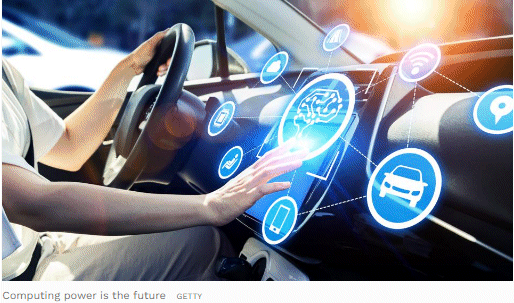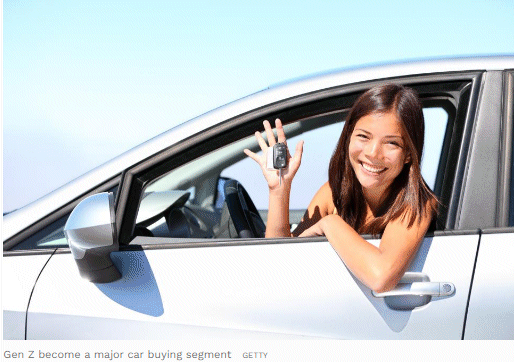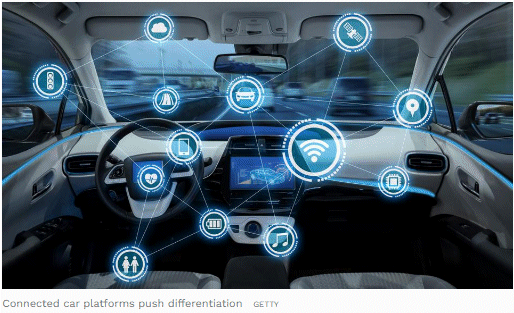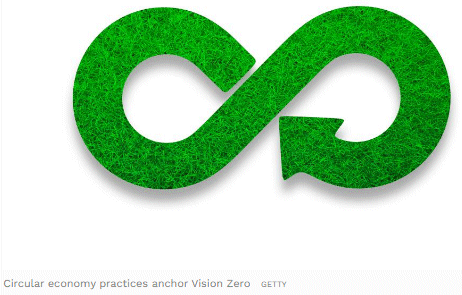I usually begin the year with a roundup of the top automotive trends for the upcoming year. Not this year though. If anything, the Covid crisis has completely overturned every prediction and projection made at the beginning of 2020.
In the past few months, my team and I started from scratch, tracking and dissecting the effects of the pandemic on the mobility industry. After much heated discussion (that’s one thing that’s remained unchanged, pandemic or not!), here is our pick of the top 20 trends that we believe will shape the future of the auto manufacturing industry in a Covid-defined 2020 and beyond.
It’s All About Change
Data As The 21st Century Oil, The Shift From “Horsepower” To “Computing Power”: Data-as-a-service is set to grow post Covid. A key transformation, echoed in Tesla’s differentiation strategy, will be the move from horsepower to computing power. In contrast, the continued focus of German and Japanese automakers on horsepower could soon end up becoming misaligned with the new digital architecture requirements of vehicles.
Autonomous Level 2.5 To Become Stop Gap Preference: Covid has derailed plans to leapfrog from Level 2 to Level 4 of vehicle autonomy. Automakers are now contemplating two divergent approaches: first, the Tesla strategy which aims to combine camera-based technologies to push onto Level 5 and, second, the proceed-with-caution strategy which seeks to persist with Level 2.5 for a period of time before ramping up to Level 4. There’s also the eternal development vs deployment debate. I am willing to wager that deployment rather than development will determine the winner of the autonomous race and that China will be the first to dash over the finish line.
Shakeup Of The Fleet Market: Typically, fleet markets have always made gains during a period of recession. This time might be a little different. Hertz’s collapse is symptomatic of the market’s decline. Car allowances might be (pay) cut by corporates, causing the lucrative corporate fleet market, especially the premium segment, to suffer. A glimmer of hope will come in the form of growth in private leases.
Growth In Subscription Services: I’ve always been bullish about subscription services and continue to be upbeat as they spread rapidly to developing automotive markets. I foresee two major shifts here: one, from the premium segment to more volume segment offerings and, two, from being primarily city-based models to becoming more pan-country based models.
Gen Z As Car Buyers: A big one for car companies will be the coming of age of Gen Z customers. This trend will be noticeable in countries like China, India and Saudi Arabia which have young populations as well as the U.S. where car ownership happens at a much younger age. Automakers will perforce create differentiated Gen Z focused strategies, while special models underpinned by connectivity technologies —I think the Chinese will steal the thunder here, again—will be designed to appeal to Gen Z customer preferences.
Heterogeneous Society As Customer: Post Covid, social polarization along age, gender, income, and even political lines is set to intensify. This creates a serious challenge for car companies that have hitherto excelled at segmenting and sub-segmenting both cars and customers. The real challenge now will be not to build more models but to drive greater personalization. The good news is that new digital IoT solutions can enable just that. As a result, car companies are working on what we call “customer transformation”, in essence, creating personalized and customized digital solutions across the customers’ lifecycle management of the vehicle.
Future Of Work: In the workplace, we will see a transition from working in office to working from your castle, i.e., home. Accordingly, commuting miles will decrease and the role of the car, which used to be primarily for work commutes, will shift to being used for the weekends, evening trips and shorter drives. Such trends will again challenge car companies who depend heavily on high mileage driven by the workplace commute. Another consequence of lower commuting miles will be felt in lower aftermarket sales.
Luxury To Manifest In “Digital” Vehicle Functions: We expect luxury vehicle sales to decline by 30-35% over the short-term before gradually picking up over the medium- to long-term. At this point, luxury will reinvent itself, manifesting as “digital” experiences.
Cars As Points Of Health: Built in, bought in and beamed-in features are converting the car into centers of health, wellness and wellbeing (HWW). New HWW features like ionizers and ozonizers that purify in-vehicle air as well as self-cleaning car surfaces will become standard offerings in cars.
Cars As An Element Of Connected Living Solutions: Cars will become an integral part of connected living solutions. Voice recognition and personal assistants, combined with the launch of 5G in the near future, will connect the vehicle-to-home, vehicle-to-vehicle and vehicle-to-everything. I, for one, am looking forward to driving back on a cold winter’s night, while being able to set the temperature at home to a balmy 27C.
Car As A Marketplace: in the future, everything related to on route mobility services will be available through a car. Enabling technologies will convert cars into marketplaces, allowing consumers to do literally everything—refueling, purchasing services, paying for tolls, getting Features on Demand (FoD), and much more—from the comfort and convenience of their car.
Connected Car IoT Platforms: Much like mobile phones, we will see operating systems becoming standard for cars. This will be a key way of achieving differentiation in the future. I expect over 100 connected car features to be available to consumers across emerging and developed markets by 2025, from current figures of less than 40 in most high-end vehicles.
Two Speed World Economy: Globally, auto sales will recover much faster in China and the U.S. than the EU and India. After 21 months of continuous decline, the Chinese car industry actually grew in April and May. New hotspots of growth might emerge in Russia and Eastern Europe.
Rise Of Lean Product Development Strategy, Diversification Of Supply Chains: The Covid crisis has highlighted the overdependence of the auto industry on Chinese suppliers for parts, especially in the electric vehicle (EV) market. As car companies revisit their value chains, they will evaluate reused and shared parts for new product development. We might also see car companies cut back and consolidate the number of trims, variants and powertrains. Supply chain diversification will open up opportunities for countries like India and Mexico. Meanwhile, Brexit and other protectionist economic policies will favor onshoring rather than offshoring in the future.
New Collaborative Business Models To Accelerate: Informed by a partnership / collaborative approach, new business models are set to mushroom across the value chain. For instance, car companies will also become charging point utilities, much like what VW has done. Another example relates to the need for dedicated platform and vehicle architecture to manufacture EVs. Initiatives here will increasingly involve licensing models or collaborative endeavors like GM’s with Cruise and Honda.
Online To Boom: We are already in the midst of a paradigm shift from offline to online. Sales of new and used cars as well as of vehicle related services will become platform / digital based. As downstream functions in the car also experience rapid digital transformation, OEMs will need to redesign their digital retailing strategy.
Growth In Share Of Wallet Across Product Lifecycle: Car companies now focus not just on selling hardware, i.e., the metal, but equally on generating continuous revenues across the lifecycle of the vehicle. In their pursuit of value creation, retention and enhancement, automakers will push forward on connectivity platforms, personalized offerings and FoD services.
Circular Economy, Automotive Industry Innovates to Zero: Covid will provide impetus to automakers’ Vision Zero initiatives. Car companies have been very good in terms of building carbon neutral factories, striving for zero fatalities or developing zero emission cars. But what we are seeing now is the incorporation of use and reuse practices – the ‘Design to Dismantle’ principle – at the design stage itself. Such circular economy practices will anchor the transition towards Innovating to Zero.
Return Of The Hatchback And New Body Styles: We might see the return of the hatchback, exemplified by the VW Golf, as a second car. If SUVs and cross overs were the dominant body styles of the last decade, the next decade could see the emergence of new body styles driven either by Covid, the shift to a second type of car or the debut of a new generation of boxy, monolithic models for the growing Gen Z customer segment.
Rebirth Of The Used Car Market: In an environment where value is paramount, the used car market will make a strong comeback. Valuations of used car companies are at an all-time high (pick up some Vroom stock right away!), while auction prices for used cars are on the up and up. Meanwhile, we will see a big shift to digital marketplace models for used cars. So far, Frost & Sullivan has already identified six such platforms with used car sales likely to migrate wholly online over the next 3-5 years.
Covid might have thrown the automotive industry (not to mention, our annual forecasts) off track. However, it has provided automakers with an unexpected opportunity to introspect and home in on the most impactful ideas and trends that will shape their future in the decade ahead.
Article was originally published on Forbes.com







